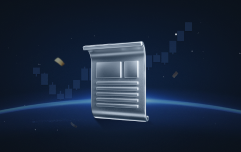Leaked Code Reveals MetaMask Is Launching In-Wallet Perpetuals Trading using Hyperliquid
MetaMask, the widely used self-custodial crypto wallet, appears set to integrate perpetuals trading directly within its interface through a partnership with Hyperliquid, a fast-growing decentralized derivatives platform.
Code updates on MetaMask’s public GitHub repository suggest that the feature is under active development, with references to a new “Perps” trading screen and deposit functionality enabling users to fund perpetual futures accounts in USDC.
Leaked Code Hints at MetaMask–Hyperliquid Integration Ahead of Token2049
The development points to a major expansion of MetaMask’s offerings. Currently serving more than 30 million monthly active users, the wallet has long been a gateway for decentralized applications.
By embedding perpetuals trading within its interface, MetaMask would allow users to trade leveraged derivatives without leaving the wallet environment, mirroring the seamless experience traditionally offered by centralized exchanges.
Hyperliquid, which MetaMask is preparing to integrate, specializes in high-performance perpetual futures trading.
Built on its own Layer 1 blockchain, the platform has positioned itself as a leader in decentralized derivatives by offering gas-free transactions and fully on-chain settlements.
Its custom HyperEVM architecture supports more than 200,000 orders per second while maintaining transparent order books, a model designed to deliver the speed of centralized platforms while retaining the security of decentralized infrastructure.
The leaked GitHub code provides further detail on the integration process.
A pull request merged in July added a USDC deposit flow for Hyperliquid’s perpetuals, including minimum deposit requirements, real-time gas fee estimates, slippage tracking, and transaction confirmations.
Testing instructions indicated that users could initiate deposits from within the MetaMask wallet, verify fee breakdowns, and receive status updates until successful completion.
The timing of the rollout appears close. Developers hinted at a launch in the coming weeks, with speculation that MetaMask could formally announce the feature at Token2049 in September during a Hyperliquid-hosted event.
The integration would coincide with Hyperliquid’s rapid rise in the derivatives sector. The exchange recently reported $383 billion in monthly trading volume and $106 million in revenue for August, a 23% increase from July.
DefiLlama data shows its annualized revenue now exceeds $1.162 billion, with cumulative perpetual trading volume reaching $2.57 trillion.
Hyperliquid has captured an estimated 70% share of the DeFi perpetuals market, consistently outperforming both decentralized and smaller centralized rivals.
Its lean operational model relies on automation and smart contracts, enabling the platform to process $330.8 billion annually with a workforce of only 11 employees.
For comparison, PayPal employs nearly 29,000 people to handle $1.6 trillion, while Visa’s 28,000 employees process $13 trillion.
The exchange’s growth has also been driven by institutional adoption.
Partnerships with Anchorage Digital Bank for custody services and Circle for native USDC deployment have helped attract larger players.
The decentralized exchange recently slashed spot trading fees by 80%, in a move designed to boost liquidity and deepen its hold over the decentralized finance (DeFi) derivatives market.
If confirmed, the MetaMask integration would mark a pivotal step in bringing advanced derivatives trading into mainstream decentralized finance.
For MetaMask’s vast user base, it could eliminate the need to rely on centralized venues while further cementing Hyperliquid’s position as a dominant force in crypto derivatives.
MetaMask Prepares for Long-Awaited Token Launch After Lubin Confirmation
MetaMask’s long-discussed token launch appears closer than ever after Consensys CEO Joseph Lubin confirmed this week that “the Mask token is coming” and could arrive sooner than expected. The Ethereum co-founder linked the rollout to efforts to decentralize parts of the MetaMask platform.
The remarks mark the strongest signal yet of an imminent launch, following years of speculation dating back to 2021, when Lubin teased “Wen $MASK?” on social media.
Co-founder Dan Finlay had previously suggested a token could be introduced under favorable market conditions, emphasizing that any issuance would be promoted directly inside the wallet.
MetaMask has recently expanded its product suite. In July, it partnered with Mastercard and Baanx to release a crypto debit card, offering users direct spending options.
On August 6, a governance proposal outlined plans for MetaMask USD (mmUSD), a native stablecoin built with Stripe’s payment rails.
The token is expected to launch on Ethereum and Consensys’ Linea network on August 21, supporting DeFi integrations for lending, borrowing, and liquidity.
The wallet also unveiled a social login feature on August 27, allowing accounts to be recovered via Google or Apple credentials without compromising self-custody.
The function, built on technology from Web3Auth, addresses one of the biggest hurdles for mainstream users by eliminating the risks tied to lost seed phrases.
Together, the initiatives suggest MetaMask is positioning itself as more than just a wallet but as a complete financial gateway for decentralized services.
You May Also Like

Will Ripple Be the Death of SWIFT?

How To Make Over $100,000 A Year As A Shepherd
